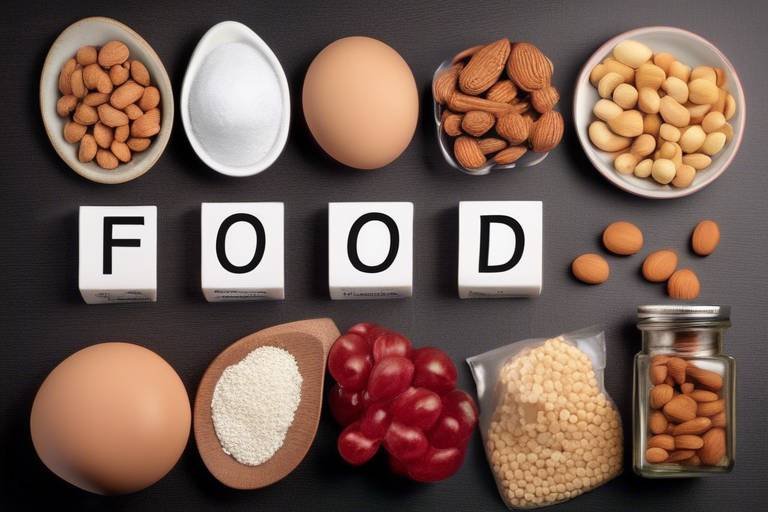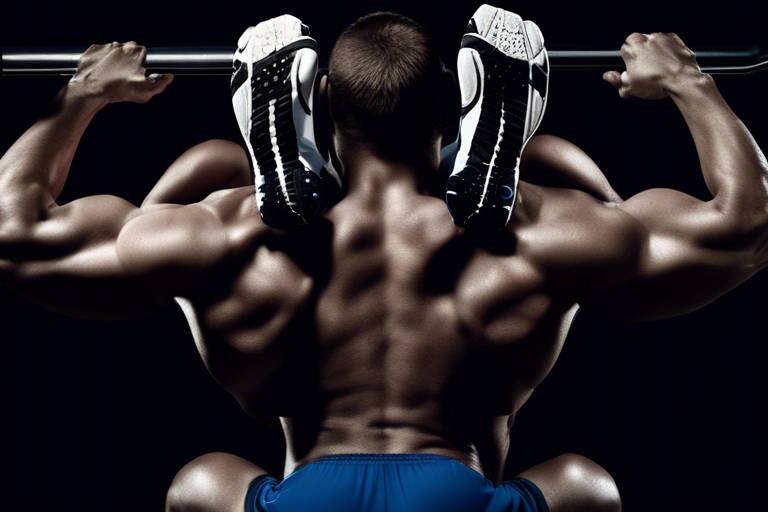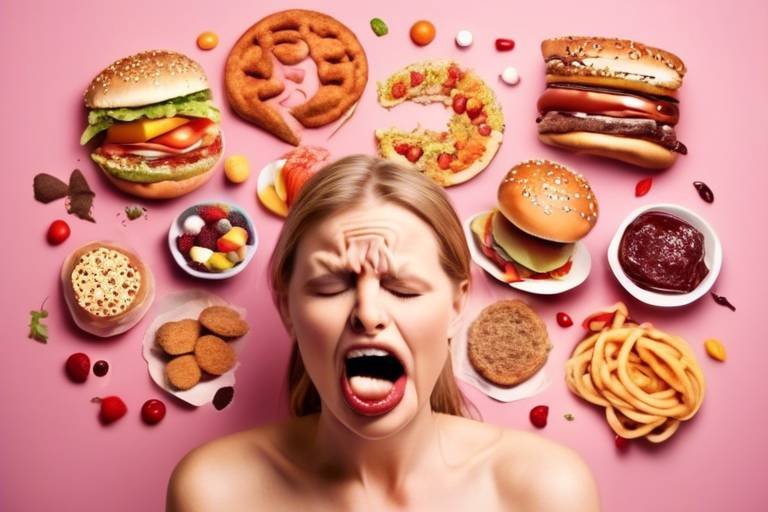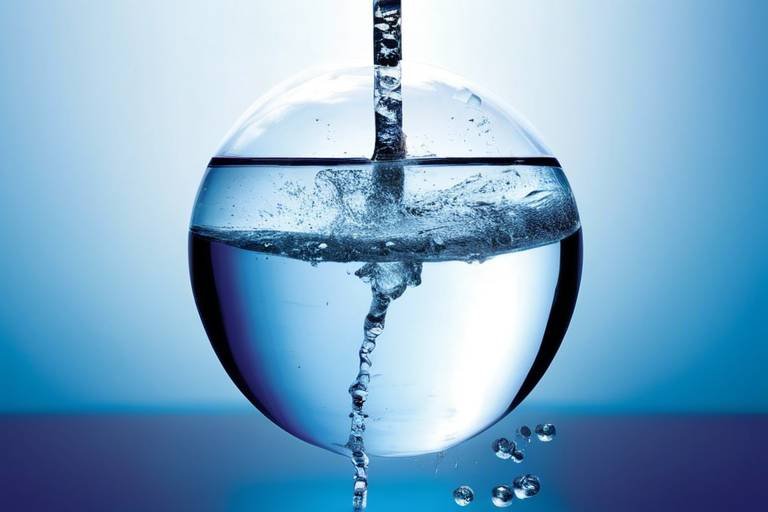The Physics of Heat Transfer - Understanding Cooking
Cooking is more than just a daily task; it's a fascinating science that combines art and physics. At the heart of this culinary journey lies the fundamental principles of heat transfer. Understanding how heat moves through different mediums can significantly enhance your cooking skills and elevate your dishes from ordinary to extraordinary. In this article, we will explore the three primary modes of heat transfer: conduction, convection, and radiation. Each of these processes plays a crucial role in how food is prepared, affecting everything from texture to flavor. So, whether you’re frying a steak, baking a cake, or grilling vegetables, knowing how heat works can make all the difference.
Let’s kick things off with conduction, the most straightforward method of heat transfer. Imagine placing a cold slice of pizza on a hot pan. The heat from the pan is directly transferred to the pizza through contact, warming it up. This is conduction in action! In cooking, conduction is vital in methods like frying and baking, where heat moves from the cooking surface—like a skillet or oven rack—directly into the food. For instance, when you fry an egg, the heat from the pan causes the egg proteins to denature and coagulate, transforming the liquid into a solid. It’s this direct contact that creates that delicious golden crust we all love.
Next up is convection, which involves the movement of heat through liquids and gases. Think of a pot of boiling water: as the water at the bottom heats up, it rises to the top, while cooler water descends to take its place. This creates a convection current, which ensures even cooking. The shape and size of your pot can significantly impact the efficiency of this process. For example, a wide, shallow pan allows for more surface area, promoting better heat distribution compared to a tall, narrow pot. This is especially important for methods like simmering sauces or cooking pasta, where even heat is essential for the best results.
When it comes to convection, there are two types to consider: natural convection and forced convection. Natural convection occurs when hot air or liquid rises and cool air or liquid sinks without any external assistance. It’s like a gentle breeze in your kitchen. On the other hand, forced convection involves using fans or stirring to enhance the heat transfer process. Think of how a convection oven works; it uses a fan to circulate hot air, cooking food more evenly and quickly than a traditional oven. This can be a game-changer for achieving that perfectly roasted chicken or evenly baked cookies.
Baking is another area where convection shines. In convection ovens, the hot air circulates around the food, allowing for even heat distribution. This means that your cookies will bake uniformly, and your cakes will rise beautifully without any raw spots. It’s essential to adjust baking times and temperatures when using convection ovens, as they can cook food faster than conventional ovens. Generally, you can reduce the temperature by about 25°F and keep an eye on your treats to avoid over-baking.
Frying techniques also leverage convection. When you fry food, hot oil circulates around it, cooking it evenly and creating that crispy texture we all adore. However, the temperature of the oil is crucial. Too low, and your food will absorb excess oil, becoming greasy; too high, and it may burn on the outside while remaining raw inside. Maintaining the right oil temperature ensures that your fried chicken is crispy on the outside and juicy on the inside.
Several factors can influence convection, including the shape of your cookware, the temperature gradient, and the type of food being cooked. For example, a larger pot will allow for more convection currents, while a tightly packed pot may hinder them. Understanding these factors can help you improve your cooking techniques and achieve better outcomes in the kitchen.
Now, let’s delve into radiation, the most fascinating and often misunderstood method of heat transfer. Unlike conduction and convection, radiation doesn’t require contact or a medium to transfer heat. Instead, it uses electromagnetic waves. When you grill or broil food, you’re using radiant heat. This method can significantly enhance the flavor and texture of your dishes. Think about the delicious char marks on a steak; that’s the magic of radiation at work!
Infrared radiation plays a significant role in cooking, especially in appliances like broilers and infrared grills. These devices emit infrared waves that penetrate the food, cooking it quickly while promoting browning and caramelization. This is particularly effective for achieving that perfect sear on meats or a crispy crust on pizzas. The beauty of infrared cooking is that it can produce restaurant-quality results right in your kitchen.
While cooking with radiation is effective, it’s essential to understand safety measures to avoid overcooking or burning your food. Always monitor your food closely and adjust cooking times as needed. Using a food thermometer can help ensure your dishes are cooked to perfection without the risk of burning them. Remember, safety first in the kitchen!
- What is the best cooking method for even heat distribution? Convection is often the best choice for even heat distribution, especially when using a convection oven.
- How does oil temperature affect frying? The right oil temperature is crucial; too low can make food greasy, while too high can burn the outside while leaving the inside raw.
- What is the difference between natural and forced convection? Natural convection relies on the natural movement of hot and cold fluids, while forced convection uses fans or stirring to enhance heat transfer.

Conduction: The Direct Transfer of Heat
Conduction is like a game of hot potato, where heat is passed directly from one object to another through contact. Imagine you're frying an egg in a pan; the heat from the stove is transferred to the pan, and then the pan transfers that heat to the egg. This process is essential in cooking, as it directly affects how well and evenly your food cooks. In essence, conduction is the backbone of many cooking techniques, and understanding it can elevate your culinary skills to new heights.
When you place a cold piece of meat on a hot grill, the heat from the grill grates travels into the meat, causing its temperature to rise. This is conduction at work! The efficiency of this heat transfer depends on several factors, including the materials involved, their temperature difference, and the surface area in contact. For instance, metals like copper and aluminum are excellent conductors, making them ideal for cookware, whereas materials like wood and plastic are poor conductors and often used for handles to prevent burns.
Here are some key points about conduction in cooking:
- Direct Contact: Heat moves through direct contact between surfaces.
- Material Matters: Different materials conduct heat at different rates.
- Temperature Gradient: A larger temperature difference enhances heat transfer.
- Surface Area: More contact area means better heat conduction.
In practical terms, this means that when you're baking, the heat from the oven walls is conducted through the baking tray and into the batter, ensuring that your cake rises and bakes evenly. On the other hand, if you're frying, the heat from the oil is conducted into the food, creating that delicious crispy texture we all love. Understanding these principles can help you adjust your cooking methods for optimal results, whether you're searing a steak or roasting vegetables.
It's also important to note that the cooking time can vary significantly based on the conduction process. For example, if you're using a thick cast-iron skillet, it will retain heat longer and distribute it more evenly than a thin pan, which may lead to hot spots and uneven cooking. Therefore, choosing the right cookware is crucial for achieving the best results in your culinary endeavors.
In conclusion, conduction is a fundamental concept that underpins many cooking techniques. By grasping how heat transfer works through direct contact, you can make informed decisions in the kitchen, leading to better flavors and textures in your dishes. So, the next time you cook, think about how conduction is working behind the scenes, and let it guide you to culinary success!

Convection: Heat Transfer Through Fluids
Convection is an essential concept in cooking that involves the transfer of heat through fluids, which can be either liquids or gases. Imagine a pot of water heating on the stove. As the water at the bottom warms up, it becomes less dense and rises to the top, while the cooler, denser water descends to take its place. This continuous movement creates what we call convection currents, ensuring that heat is distributed evenly throughout the liquid. This principle is not only fascinating but crucial for achieving perfectly cooked meals.
In cooking, convection plays a vital role in several methods, such as boiling, steaming, and baking. When you boil pasta, for instance, the bubbling water circulates around the noodles, cooking them evenly. Similarly, in an oven, convection currents help to ensure that each cookie bakes uniformly, preventing some from being burnt while others remain doughy. Understanding how convection works can significantly enhance your culinary skills and the quality of the dishes you prepare.
There are two main types of convection: natural convection and forced convection. Natural convection occurs when the heat source causes a fluid to move without any external force. This can be observed in a pot of soup simmering on the stove, where the heat from the bottom causes the liquid to move upwards naturally. On the other hand, forced convection involves the use of external forces, such as fans or stirring, to enhance the movement of the fluid. For example, using a fan in a convection oven helps to circulate hot air, cooking food more evenly and efficiently.
To grasp the differences between natural and forced convection, consider the following:
| Type of Convection | Description | Example in Cooking |
|---|---|---|
| Natural Convection | Heat causes the fluid to move on its own due to density changes. | Simmering soup on the stove. |
| Forced Convection | Fluid movement is enhanced by external means, like fans or stirring. | Using a convection oven or stirring a pot. |
In baking, convection is particularly important. Convection ovens have fans that circulate hot air around the food, which not only speeds up cooking times but also helps achieve that coveted golden-brown finish. This even heat distribution means you can say goodbye to unevenly baked cookies or cakes that are crispy on one side and raw on the other. When using a convection oven, you might even find that you can reduce the baking temperature by about 25°F (14°C) compared to a traditional oven, allowing for a more efficient cooking process.
Frying techniques also take advantage of convection. When you fry food, the hot oil surrounds the ingredients, creating a convection current that cooks them evenly. The temperature of the oil is crucial here; too low, and the food will absorb too much oil, becoming greasy and soggy. Too high, and you risk burning the outside while the inside remains raw. Understanding how convection works in frying can help you achieve that perfect crispy texture that we all crave.
Several factors can influence convection, including the shape of your cookware, the temperature gradient, and even the type of food being cooked. For instance, a wider pot allows for more surface area for heat transfer, while a tall, narrow pot may hinder the movement of convection currents. By considering these factors, you can optimize your cooking techniques to ensure better results and more delicious meals.

Natural Convection vs. Forced Convection
When it comes to cooking, understanding the difference between natural convection and forced convection can significantly impact your culinary results. Both processes involve the movement of heat through fluids—like air or water—but they operate in distinct ways. Natural convection occurs when heat causes a fluid to rise and cooler fluid to sink, creating a natural circulation. Imagine a pot of water on the stove: as the water heats up, the warmer water at the bottom rises to the top, while the cooler water descends. This self-driven movement helps distribute heat evenly, which is crucial for cooking methods like boiling or simmering.
On the other hand, forced convection takes things up a notch. In this scenario, an external force, such as a fan or a stirring utensil, actively moves the fluid around. Think about using a fan in your oven or a blender to mix ingredients. This method not only speeds up the cooking process but also enhances heat distribution, making it more efficient. In fact, many modern cooking appliances, like convection ovens, utilize forced convection to ensure that your food cooks evenly and thoroughly.
To give you a clearer picture, let's break down the characteristics of both types of convection in a table:
| Aspect | Natural Convection | Forced Convection |
|---|---|---|
| Heat Source | Internal (heat rises naturally) | External (fan or stirring) |
| Speed | Slower | Faster |
| Efficiency | Less efficient | More efficient |
| Common Applications | Boiling, simmering | Convection ovens, frying |
Understanding these differences not only helps you appreciate the science behind cooking but also empowers you to make better choices in the kitchen. For instance, if you're baking a cake, using a convection oven can lead to a more even bake, while boiling pasta might benefit from the gentle, natural movement of water. So, the next time you're whipping up a meal, consider whether you want to rely on nature or give it a little nudge with forced convection!

Applications in Baking
Baking is an art form that relies heavily on the principles of convection to achieve that perfect rise and golden crust. When you place a tray of cookies in the oven, it's not just the heat from the coils that does the job; it's the way that heat circulates around the food that makes all the difference. Convection ovens, for example, are designed to enhance this process by using fans to distribute hot air evenly throughout the cooking chamber. This results in evenly baked goods that are crisp on the outside and soft on the inside, a culinary dream come true.
But how does this work in practice? Imagine the heat as a flock of birds, each one carrying warmth as they flutter around your cookies. This movement ensures that every cookie gets its fair share of heat, leading to a consistent bake. In traditional baking, where heat rises naturally, the distribution may not be as uniform, which can lead to some cookies being perfectly baked while others remain undercooked. This is where the design of your oven plays a crucial role. The shape and size of the oven can significantly affect how the heat circulates, making it essential to choose the right equipment for the best baking results.
Moreover, understanding the science behind baking can help you make informed adjustments to your recipes. For instance, if you're using a convection oven, you typically need to lower the baking temperature by about 25°F (or 15°C) compared to conventional ovens. This adjustment helps prevent over-baking and ensures that your baked goods come out just right. Additionally, baking times may need to be shortened, as the efficient heat transfer can speed up the cooking process. It's all about finding that sweet spot, much like a musician tuning their instrument for the perfect sound.
To sum it up, the applications of convection in baking are vast and impactful. Whether you're whipping up a batch of muffins or a delicate soufflé, understanding how heat circulates can elevate your baking game. Next time you step into the kitchen, remember that the science of heat transfer is your secret ingredient for success!
| Type of Oven | Temperature Adjustment | Baking Time Adjustment |
|---|---|---|
| Convection Oven | Lower by 25°F (15°C) | Reduce by 5-10 minutes |
| Conventional Oven | No adjustment needed | Standard baking time |
- What is the difference between convection and conventional ovens?
Convection ovens use fans to circulate hot air, while conventional ovens rely on radiant heat from the heating elements. - Can I use regular baking recipes in a convection oven?
Yes, but you may need to adjust the temperature and baking time for optimal results. - Why do baked goods rise in the oven?
The heat causes gases in the batter to expand, leading to a rise as the structure sets.

Applications in Frying
Frying is one of the most popular cooking methods around the globe, and it’s no surprise why! The process not only creates deliciously crispy textures but also enhances the flavors of various ingredients. At the heart of frying is convection, where hot oil circulates around the food, cooking it evenly from all sides. This method is not just about submerging food in oil; it’s a delicate dance of temperature, timing, and technique.
When frying, the temperature of the oil is crucial. If the oil is too cool, the food will absorb excess oil and become greasy, losing that coveted crispiness. Conversely, if the oil is too hot, the exterior may burn before the inside is properly cooked. Ideally, you want to maintain the oil at a temperature between 350°F to 375°F (175°C to 190°C) for optimal frying results. Here’s a quick reference table to help you gauge the right temperatures for different frying techniques:
| Frying Technique | Ideal Oil Temperature (°F) | Ideal Oil Temperature (°C) |
|---|---|---|
| Shallow Frying | 350°F - 375°F | 175°C - 190°C |
| Deep Frying | 350°F - 375°F | 175°C - 190°C |
| Stir Frying | 400°F - 450°F | 200°C - 230°C |
Another vital aspect of frying is the type of oil used. Different oils have different smoke points, which is the temperature at which they start to smoke and break down. For instance, oils like canola and peanut oil have higher smoke points, making them ideal for frying. On the other hand, oils like olive oil are better suited for lower-temperature cooking methods. Here’s a quick comparison of common frying oils:
- Canola Oil: High smoke point, neutral flavor, great for deep frying.
- Peanut Oil: High smoke point, adds a subtle nutty flavor, excellent for Asian dishes.
- Olive Oil: Lower smoke point, perfect for shallow frying and sautéing.
Moreover, the shape of the cookware can significantly affect frying results. A wide, shallow pan allows for more oil surface area, which can lead to better heat distribution and quicker cooking times. Conversely, a narrow pot may trap steam and moisture, resulting in soggy food. It’s all about creating a frying environment where the food can be enveloped in hot oil, ensuring even cooking and that delightful crunch.
Lastly, don’t underestimate the importance of resting your fried food after cooking. Placing it on a wire rack or paper towels allows excess oil to drain away, keeping your food crispy and light. Remember, frying is as much an art as it is a science, and understanding the principles behind it can elevate your cooking game to new heights!

Factors Affecting Convection
When it comes to convection, several factors can significantly influence how heat is distributed and transferred during cooking. Understanding these factors can elevate your culinary skills and lead to more consistent results in the kitchen. First and foremost, the shape and size of your cookware play a crucial role. For instance, a wide, shallow pan allows heat to circulate more freely than a deep, narrow one, which can trap heat and create uneven cooking zones.
Another important factor is the temperature gradient. This refers to the difference in temperature between the heat source and the food being cooked. A greater temperature difference can create stronger convection currents, leading to more efficient cooking. Imagine boiling water: the hottest water rises to the top, while cooler water sinks, creating a dynamic flow that helps cook pasta or vegetables evenly.
Moreover, the type of food being cooked also affects convection. Different foods have varying densities and moisture contents, which can influence how heat is absorbed and distributed. For example, dense foods like potatoes may require more time and a higher temperature to cook through compared to lighter foods like leafy greens, which can wilt quickly. The size of the food pieces is equally significant; smaller pieces will cook faster due to their increased surface area.
Additionally, the presence of additives such as oils or fats can alter convection dynamics. Oil can create a barrier that prevents water from directly contacting food, impacting how heat is transferred. This is particularly relevant in frying, where the oil not only cooks the food but also helps in achieving that perfect crispy texture. Lastly, external factors like airflow and ambient temperature can also affect convection, especially in open cooking environments like grills or outdoor kitchens.
In summary, mastering convection cooking involves a keen awareness of these factors. By adjusting your cookware, managing temperature gradients, considering the type and size of food, and being mindful of additives, you can harness the power of convection to create delicious, evenly cooked meals. It's a fascinating interplay of science and art in the kitchen!
- What is convection cooking? Convection cooking is a method that uses the movement of air or liquids to transfer heat, ensuring even cooking.
- How does cookware shape affect convection? Cookware shape influences heat circulation; wider pans allow for better airflow, leading to more uniform cooking.
- Can convection cooking be used for all types of food? While it works well for many foods, denser items may require different settings or longer cooking times.
- What role does temperature gradient play in convection? A larger temperature difference between the heat source and food enhances convection currents, improving cooking efficiency.

Radiation: The Invisible Heat Transfer
When we think about cooking, we often visualize pots on the stove or food sizzling in a pan. But there's a whole different realm of heat transfer happening that we can't see—this is known as radiation. Unlike conduction, which requires direct contact, and convection, which depends on fluid movement, radiation is all about electromagnetic waves transmitting heat through empty space. It’s like the warmth you feel from the sun on your skin, even though it’s millions of miles away!
In the kitchen, radiation plays a crucial role, especially when using methods like grilling and broiling. When you grill a steak, for instance, the heat from the grill grates radiates directly to the meat, cooking it from the outside in. This process not only cooks the food but also enhances its flavor and texture. The Maillard reaction, which gives grilled foods that delicious brown crust, is a direct result of the high temperatures achieved through radiant heat.
One of the most fascinating aspects of cooking with radiation is the role of infrared radiation. This type of radiation is emitted by various cooking devices, such as broilers and infrared grills. Infrared radiation cooks food quickly and efficiently, allowing for a beautiful sear on meats while keeping the inside juicy and tender. The science behind this is quite simple: infrared waves excite the molecules in the food, generating heat and promoting browning and caramelization. It’s like having a little sun right in your kitchen!
However, cooking with radiation isn’t without its challenges. While it can create mouthwatering results, it also requires a keen understanding of how to use it safely. Overexposure to radiant heat can easily lead to overcooked or burnt food. To avoid this, it’s essential to monitor cooking times closely and adjust the distance between the food and the heat source. For example, when using a broiler, placing the food too close can result in a charred exterior before the inside is properly cooked.
Here are some best practices for using radiant heat effectively in your cooking:
- Preheat your grill or broiler: This ensures that the cooking surface is hot enough to sear and brown your food.
- Keep an eye on cooking times: Radiant heat can cook food much faster than conventional methods, so regular checks are crucial.
- Use a meat thermometer: This helps ensure that your food reaches the desired internal temperature without burning the outside.
- Adjust the distance: Experiment with the distance between the food and the heat source to find the sweet spot for your specific cooking method.
In conclusion, understanding radiation as a method of heat transfer opens up a world of culinary possibilities. By harnessing this invisible force, you can elevate your cooking game, achieving flavors and textures that are simply out of this world. So next time you fire up the grill or turn on the broiler, remember that you’re not just cooking; you’re engaging in a fascinating dance of energy that transforms raw ingredients into something truly delicious.
- What is the difference between conduction, convection, and radiation?
Conduction is heat transfer through direct contact, convection involves heat movement through fluids, and radiation transfers heat through electromagnetic waves. - How does infrared radiation work in cooking?
Infrared radiation cooks food by exciting its molecules, generating heat and promoting browning and caramelization. - What are some safety tips for cooking with radiation?
Monitor cooking times, adjust the distance from the heat source, and use a meat thermometer to ensure proper cooking.

The Role of Infrared Radiation
When it comes to cooking, infrared radiation is like the unsung hero behind the scenes, quietly working its magic to transform raw ingredients into mouthwatering dishes. Unlike conduction and convection, which require direct contact or movement through fluids, infrared radiation relies on electromagnetic waves to transfer heat. This means that when you’re using devices like broilers or infrared grills, the heat is being emitted directly onto your food, cooking it from the outside in.
One of the most fascinating aspects of infrared radiation is its ability to cook food quickly while enhancing flavors and textures. Imagine biting into a perfectly grilled steak: the outside is beautifully charred, while the inside remains juicy and tender. This remarkable effect is largely due to the way infrared radiation penetrates the surface of the food, promoting browning and caramelization. The Maillard reaction, which is responsible for those delightful flavors and aromas, is significantly accelerated by the intense heat generated through infrared cooking.
To understand the impact of infrared radiation better, let’s take a look at how it compares to traditional cooking methods. Below is a simple table illustrating the differences:
| Cooking Method | Heat Transfer | Cooking Time | Flavor Development |
|---|---|---|---|
| Convection (e.g., Oven) | Air Movement | Moderate | Good |
| Conduction (e.g., Stovetop) | Direct Contact | Moderate to Slow | Good |
| Infrared (e.g., Grill, Broiler) | Electromagnetic Waves | Fast | Excellent |
As you can see, infrared cooking is not only faster but also excels in flavor development. This efficiency is particularly beneficial when grilling meats or roasting vegetables, as it allows for a quick sear that locks in moisture and enhances the overall taste of the dish. However, it’s essential to keep an eye on your food while cooking with infrared radiation, as the rapid cooking process can lead to overcooking if not monitored closely.
Moreover, the use of infrared radiation in cooking appliances has grown significantly in recent years. Many modern kitchens now feature infrared grills and broilers that allow home cooks to achieve professional-grade results. However, with great power comes great responsibility. Understanding how to use these appliances safely is crucial to enjoying the benefits of infrared cooking without the risk of burning or overcooking your food.
In conclusion, the role of infrared radiation in cooking is pivotal. It not only speeds up the cooking process but also enhances the flavors and textures of the food we prepare. So, the next time you fire up your grill or turn on your broiler, remember the science behind the heat and savor the delicious results!
- What is infrared radiation? Infrared radiation refers to the transfer of heat through electromagnetic waves, allowing for quick and efficient cooking.
- How does infrared cooking differ from traditional methods? Infrared cooking uses electromagnetic waves to transfer heat directly to food, making it faster and often enhancing flavor compared to methods like convection or conduction.
- Is infrared cooking safe? Yes, infrared cooking is safe when used correctly, but it's important to monitor food closely to avoid overcooking.

Safety Considerations in Radiation Cooking
When it comes to cooking with radiation, particularly through methods like grilling and broiling, safety is paramount. While these cooking techniques can yield delicious results, they also come with specific risks that every home chef should be aware of. First and foremost, understanding the nature of radiant heat is essential. Unlike conduction or convection, which rely on direct contact or the movement of fluids, radiation cooks food using electromagnetic waves. This means that the heat can be intense and concentrated, making it easy to overcook or even burn your food if you're not careful.
To mitigate these risks, it's crucial to monitor your cooking times closely. For instance, when using a broiler, the cooking times can be significantly shorter than traditional baking methods. A good rule of thumb is to check your food frequently, especially during the last few minutes of cooking. This vigilant approach can help you avoid the dreaded charred exterior while ensuring your food is perfectly cooked inside.
Another important safety consideration is the placement of your food. When using a grill or broiler, make sure that your food is positioned appropriately to allow even cooking. If food is too close to the heat source, it can quickly become overdone, while pieces that are too far away might not cook thoroughly. Additionally, consider using a food thermometer to check internal temperatures, ensuring that your meals are safe to eat without being overcooked. This is especially crucial for meats, where the risk of foodborne illnesses can be a concern.
Furthermore, it's essential to be mindful of the materials you use when cooking with radiation. Certain plastics, for example, can warp or release harmful chemicals when exposed to high heat. Always opt for heat-resistant cookware and utensils, and be cautious about using aluminum foil, as it can reflect heat and lead to uneven cooking if not used properly.
Lastly, understanding the safety features of your cooking appliances can enhance your cooking experience. Many modern grills and broilers come equipped with timers and automatic shut-off features that can help prevent accidents. Familiarize yourself with these functions to ensure a safer cooking environment.
In summary, while cooking with radiation can produce fantastic flavors and textures, it requires a careful approach. By monitoring cooking times, ensuring proper food placement, using safe materials, and leveraging appliance features, you can enjoy the benefits of radiant cooking while minimizing risks.
- What is the best way to prevent food from burning when using a broiler? Keep a close eye on your food and check it frequently, especially during the last few minutes of cooking.
- Can I use aluminum foil in a broiler? Yes, but be cautious as it can reflect heat and cause uneven cooking. Make sure to use it properly.
- What internal temperature should meat reach for safety? Different meats have different safe cooking temperatures; for instance, chicken should reach at least 165°F (75°C).
- Are there any specific materials I should avoid when cooking with radiation? Yes, avoid using plastics that are not labeled as heat-resistant, as they can warp or release harmful chemicals.
Frequently Asked Questions
- What is conduction in cooking?
Conduction is the direct transfer of heat through physical contact. For example, when you fry an egg in a pan, the heat from the pan moves directly to the egg, cooking it. This principle is essential in various cooking methods, including frying and baking.
- How does convection work in cooking?
Convection involves the movement of heat through liquids and gases. In cooking, this means that as water boils or air circulates in an oven, it transfers heat evenly to the food. This is why convection ovens are so popular—they help ensure that your baked goods cook evenly.
- What is the difference between natural and forced convection?
Natural convection happens when heat naturally rises and cool air sinks, creating a current. Forced convection, on the other hand, involves the use of fans or stirring to enhance heat distribution. Understanding this difference can help you choose the right cooking method for your dishes.
- How does radiation affect cooking?
Radiation is the transfer of heat through electromagnetic waves. Techniques like grilling and broiling utilize radiant heat, which can enhance the flavor and texture of your food. It’s like the sun cooking your food from a distance!
- What is infrared radiation in cooking?
Infrared radiation is a type of radiant heat that cooks food quickly and efficiently. Devices like broilers and infrared grills use this technology to achieve perfect browning and caramelization, making your meals not just delicious but also visually appealing.
- Are there safety considerations when cooking with radiation?
Yes, while cooking with radiation is effective, it's essential to understand how to use it safely. Overcooking or burning food can happen quickly, so always monitor your cooking times and adjust accordingly to prevent mishaps.
- What factors affect convection cooking?
Several factors can influence convection cooking, including the shape of your cookware, the temperature gradient, and the type of food you’re preparing. By understanding these factors, you can improve your cooking techniques and achieve better results.



















